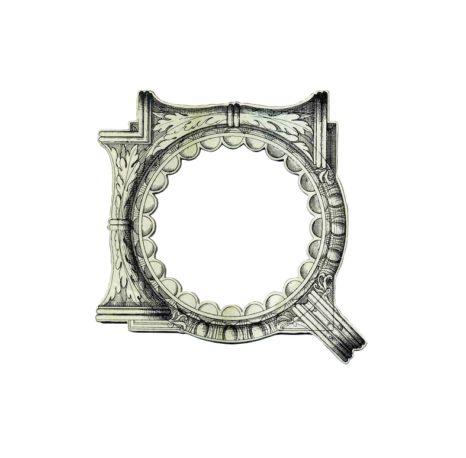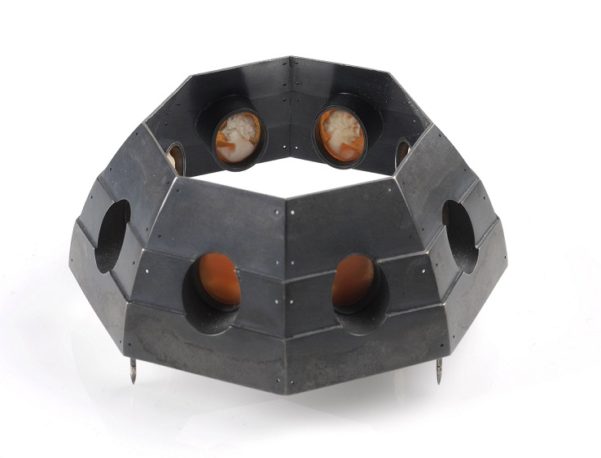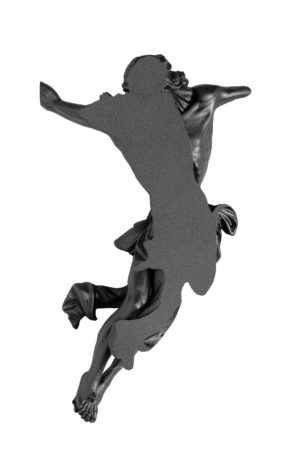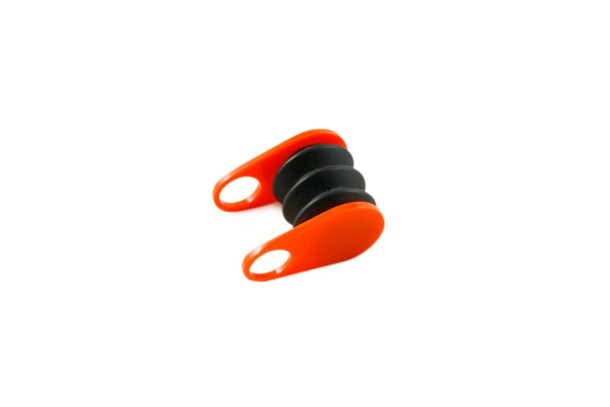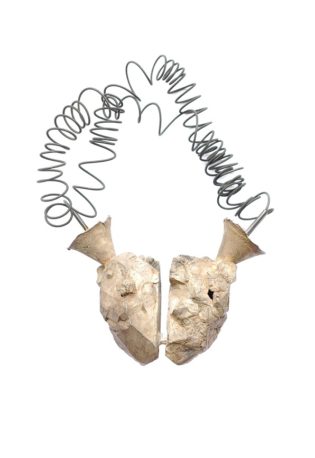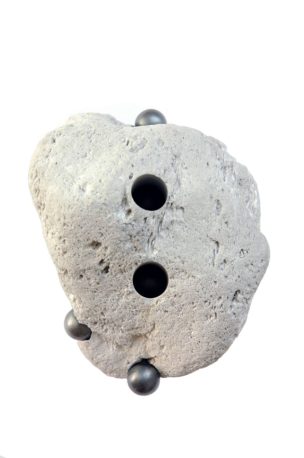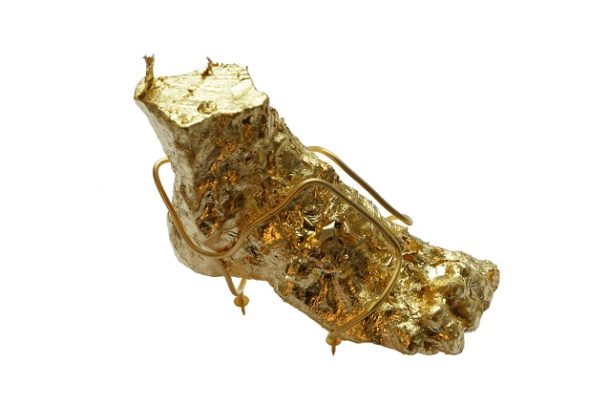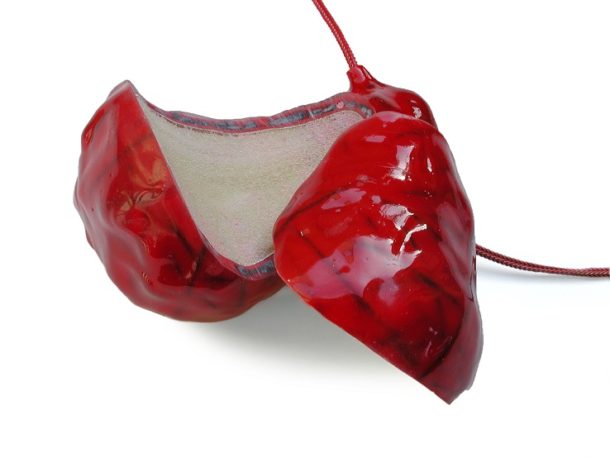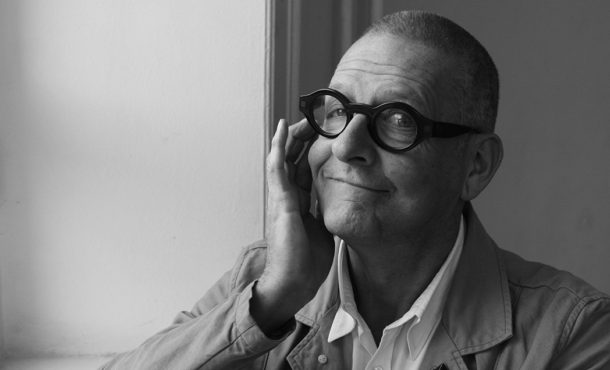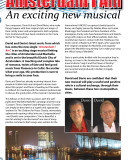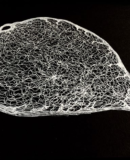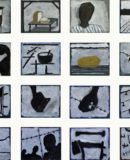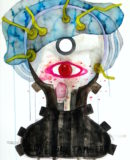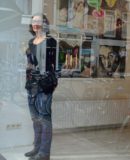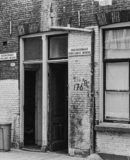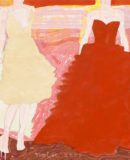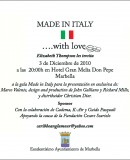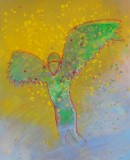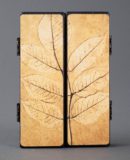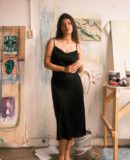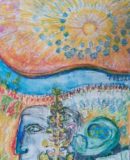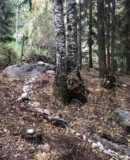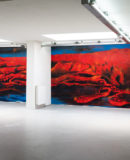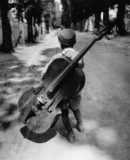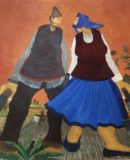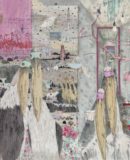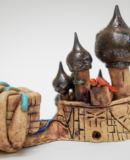World Fine Art Professionals and their Key-Pieces, 144 - Ruudt Peters
World Fine Art Professionals and their Key-Pieces, 144 – Ruudt Peters
Ruud Peters is a tall, slender man with thick black horn glasses. He is one of the best known jewelry designers in the world. A week before the retrospective exhibition of his jewelery started, he gave an explanation in his studio in Amsterdam.
The exhibition starts at the CODA Museum, then goes on to the Museum of Art in Estonia, the Jewelery Museum of Vicenza, Italy and finally to Hangzhou, China.
Hot springs from BEPPU, the so-called Jigoku
The mystery of human existence forms the basis for Peters’ work. On August 17, two neutron stars clashed. According to scientists, this type of collision causes at least half of the gold in the universe. Ruudt Peters: “Amazingly beautiful. And that on my birthday! Alchemy is important to me. What is in the earth is also in the air and vice versa. If we ruin the universe and the earth, we have no life anymore. “
He got the basic idea of the BRON (source) exhibition in Japan. There he visited the hot springs of BEPPU, the so-called Jigoku. The source bubbled out of the earth. “This is it” Peters thought. He got Alberto Gori from Italy involved, visual artist, who suggested filming the sources and then projecting that film from the ceiling onto the floor of the exhibition and play it in a loop. Around it 126 pieces of jewelry by Ruudt Peters would be shown in three circles. All in hand-blown glass bells with a metal stand that was firmly anchored with a Belgian cobblestone. Behind me are all the jewelry and glass bells packed in boxes, ready for shipment to Apeldoorn. There are still some glass bells in the room as examples that do not go along. Peters: “We had to perform the same actions 126 times. Each piece of jewelry has a number for the display case, for the glass of the lower plates on which the piece of jewelry stands, for the rod. The larger glass bells have a larger foot. Peter Wolfs, engineer, has calculated it all. It is now completely sealed. “
Sources of inspiration
The BRON exhibition gives an overview of Peters’ rebellious jewelry from the early 1970s to the more in-depth works based on research into other cultures, customs and habits from a more recent period. The special multimedia installation gives a unique picture of his oeuvre.
Curiosity about the essence and the mystery of human existence forms the basis for Peter’s work. He immersed himself in unknown cultures, philosophies, religions and materials. Based on his findings, he produced jewelry and objects that are never a literal translation of what he saw, but are a realization and internalization of his own thoughts and imagination.
Peters: “All my jewelry is related to each other and comes from a fluid process of events and different sources of inspiration. Cause and effect. Action reaction. Fall and rise. Uncertainty. Discover. Curiosity.” The exhibition not only gives an overview of his work, but also delves deeper into his sources of inspiration. On the basis of short films, retrievable via QR codes, a deeper layer can also be discovered in his work.
Peters: “I am a child of the seventies. In the first group of jewelry designers were people like Gijs Bakker and Emmy van Leersum, in the second group am I. I find it special that I have continued to love the jewelry, after I have occupied myself for a period with sculpture. I am standing proud in the tradition of Greek and Roman jewelry makers. It is about things being around the body. With a piece of jewelry you are a walking showcase. It is a conversation piece. With a piece of jewelry you get contact with the outside world.” As a maker there is even a double battery: “You charge the thing, and you wear it. “
Preparation
Preparing the exhibition lasted two years. “I have turned my entire network upside down. I have been traveling continuously, visiting places and people where my work has been given a place. I asked them to give work in their possession on loan.” They could adopt a display case in which the work was shown, 25 people were made ambassadors to talk to their networks. “I sent a mail during the ‘Schmuck trade fair’, which is held every year in Munich, where also Instagram https://www.instagram.com/ruudtpeters/ was used. “
Another nice anecdote: on one of the trips Peters was visiting the Thomas Cohn Gallery in Sao Paulo, http://www.galeriathomascohn.com.br/. He had put his backpack in the trunk of the taxi with all kinds of work. Peters was well received and then in the restaurant he realized with great fear that he did not carry his backpack. “Whatt !! I only knew that the driver was a dark man and that there was a Bible in the back of the taxi. We have called everything and everywhere. What happens an hour later? A taxi stops, a dark man gets out and says ‘I’m there’. From the backpack I took a piece of jewelry with the two feet of Jesus and gave it to him. He did not understand anything. “
The QR code also came on film. In the book / catalog – particularly beautiful – these codes are also there and if you click on them you will see films, edited by Peters himself. The films came from museum directors, curators, collectors, students and buyers. “I thought it was important to give a highlight what it is about: architecture. I did another layer over it by adding the references that I had in text. “
Other customers received a direct mailing to participate and people who never buy a jewel could donate 40 euros, and received a ‘pin’, a brooch. “I thought it was scary to do it, very American. But people responded enthusiastically. It even became a hype!”
Funds and sponsors were found, Fonds 21 and BNG Cultuurfonds came with a contribution. Companies that participated in the project contributed such as Van Dijck (from the stone) and N’omades Authentic. A team of trainees and volunteers, a total of 20 people, worked continuously for months.
A party
Peters: “It will be a party. You come into a strange dream world, a kind of forest. You have the space to see the jewelry from all sides. The work is not grouped into periods but it is a crossover, there are references to each other.” On the wall is a timeline 1973-2017 in which the development of his work is made clear. In the timeline are touchscreens where it is possible to call up movies.
Finally, Peters: “By using the latest techniques, I want to tap into generations other than those who are already interested in advance: the mobiles, the kids who read less and are visually oriented. The QR Code is already in the latest mobile phones, they do not even have to download it. “
Images: 1) Bracelet Capital Round, 1983, photo Ruudt Peters, 2) Mary Lebow, 1990, photo CODA Museum, 3) Corpus Cauda, 2011, photo Ruudt Peters, 4) Squeez, photo Rietveld Academy, 5) Separatio, photo Ruudt Peters, 6) Yesodath, photo Ruudt Peters, 7) Nero, photo Ruudt Peters, 8 IAM Terram, 2015, photo Hsiao, 9) Losis 21, 10) Portrait Ruudt Peter.
https://www.facebook.com/RuudtPetersPage
https://ifthenisnow.eu/nl/verhalen/de-wereld-van-de-amsterdamse-kunstenaar-34-ruudt-peters
Disclaimer: The views, opinions and positions expressed within this guest article are those of the author Walter van Teeffelen alone and do not represent those of the Marbella Marbella website. The accuracy, completeness and validity of any statements made within this article are not guaranteed. We accept no liability for any errors, omissions or representations. The copyright of this content belongs to Walter van Teeffelen and any liability with regards to infringement of intellectual property rights remains with the author.

